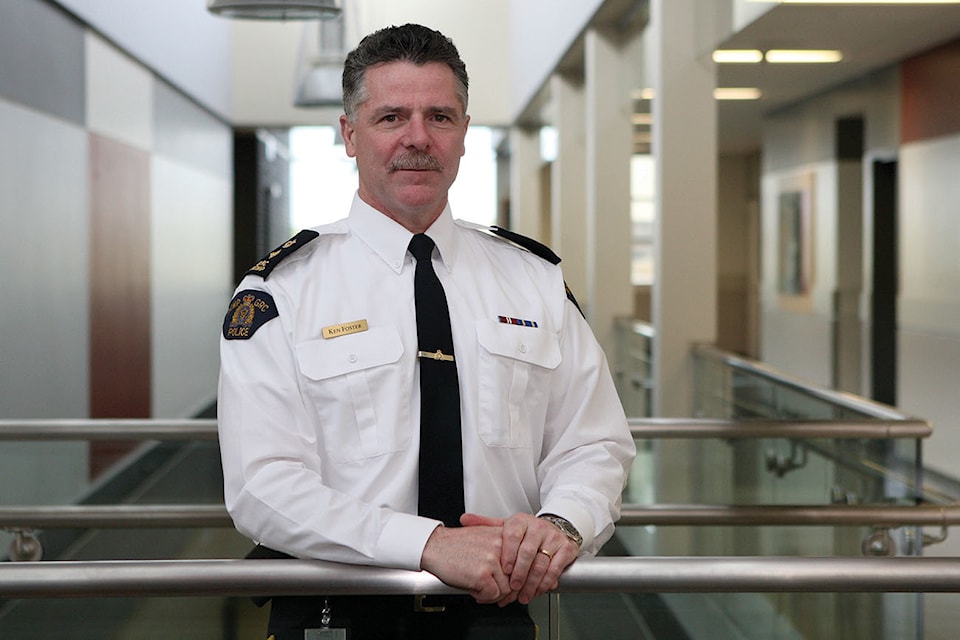Red Deer RCMP’s new boss Ken Foster takes the long view on crime fighting.
“As boring as this may be, staying the course is very important,” says the detachment’s new superintendent in a recent sit-down interview with the Red Deer Advocate.
Red Deer’s policing priorities have been developed by city staff, council and RCMP with input from community residents and agencies. Those priorities have shaped how police approach their work in the community — and that’s a long-term project.
“You can’t have the flavour du jour,” he says. “You can’t change the horse in midstream. Those priorities are set for a reason.”
The city’s challenges are similar to those faced by most Alberta communities: property crime, organized crime and drugs. Intertwined often are addiction and mental health issues.
Tackling this means ensuring all the community’s resources are working together. At the police level, that means co-ordinating nearly 160 officers and almost 90 civilian support staff for the same mission.
“One of my key messages, and a big thing for me, is that it doesn’t matter whether you’re support staff or a front-line officer, each person plays an integral role in public safety.
“If everybody is doing their job, and everybody is singing from the same song sheet … you can really start moving the yard sticks.”
Foster comes to Red Deer from St. Albert. That city of 65,000 just outside Edmonton has historically had low crime rates. By comparison, Red Deer has been at the high end of crime statistics for a number of years.
Red Deer was ranked second-most dangerous city in Canada, after Grande Prairie, based on crime severity index, by Maclean’s Magazine earlier this year.
There are many factors that come into play; geography, demographics, population growth, health issues such as addictions, and economics all shape crime levels to an extent.
But the results prompted RCMP to roll out Project Pinpoint.
“It’s targeting the whos, the whats the wheres and the whys, the whens, the spots, the places and the prolific offenders,” explains Foster
“And that’s policing smarter and we have to police smarter.”
The approach is working, he says.
“Crime trends are still going up, (but) they are going up at less fast a pace than they were before the start of Project Pinpoint.”
Foster has been impressed by the level of commitment by the community to addressing crime, as well as the underlying issues that feed it.
“There’s a great desire to work collaboratively to solve some of these issues,” he says. “And when you get that sort of commitment, you can move mountains.”
